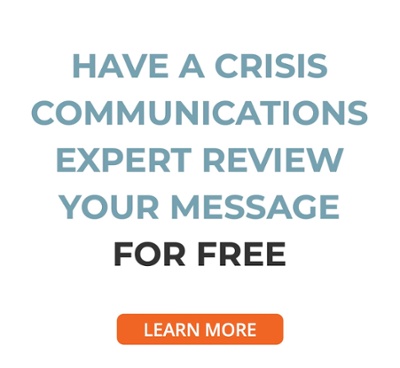How do you do so effectively, while being cognizant of the feelings of your audience?
We’ve previously discussed the topic of empathy and how it’s essential to connecting with your audience in communications around big changes. Unfortunately, a time of crisis gives you plenty of opportunities to put this idea into action. Let’s think about some topics that you may have had to communicate about in the past several weeks and what concerns your audience might have in each situation.
Situation: An employee is sick, and you have to notify coworkers that may have been in contact with him
- How will I know if I’m safe coming to work?
- What should I do if I was in contact with the individual?
- Do I have benefits that will cover testing if I experience symptoms?
- Is my company doing enough to keep employees safe and healthy?
- I’m worried about getting sick at work and bringing it home to my family.
Situation: To minimize contact at your office, you decide to have all of your employees work from home
- What should I do if I have kids that are home from school/daycare?
- What if I don’t have the appropriate equipment that I need to do my job?
- I’m worried that my job performance will be impacted by lower productivity at home.
- I have to take time out of my day to help my kids with their distance learning.
Situation: You have to lay off/furlough employees
Audience concerns:- Why did you pick me?
- What am I going to do?
- When will I get my final paycheck?
- Will I have a job again when things stabilize?
- Do I qualify for unemployment?
- I’m worried I won’t be able to afford my rent.
- I’m worried about losing my healthcare benefits.
Situation: Your business is deemed essential and you need your employees to continue reporting to work
Audience concerns:- I’m worried about coming to work and being in contact with so many other people.
- My kids’ daycare is closed, but I still have to report to work—who will watch them? Is it safe?
- Is my company doing enough to keep employees safe and healthy?
- I’m worried about getting sick at work and bringing it home to my family.
Situation: You’re a vendor that has to cancel your customers’ orders, events or appointments
Audience concerns:- What am I supposed to do now?
- Will I get a refund?
- I needed that order to supply my customers—what will I do now?
- Am I going to be able to reschedule my event for a later date?
- I’m worried that I won’t be able to get another appointment in the timeframe I need.
Situation: You want to notify your customers that your company is still open for business
Audience concerns:- Why are you bothering me now? I’m just trying to make ends meet.
- Is this company doing enough to keep their employees safe?
- Is this company trying to exploit me during this crisis?
- I’m worried about placing a big order and then the company shutting down later.
- I have received enough communication about COVID-19—I’m sick of hearing about it.
For each of these situations, follow these tips to ensure you’re being empathetic in your communications:
1. Use effective listening—if you don’t know what your audience is worried about or what they are going through—ask them. For example: Call up a valued client and see what their current concerns are with your contract and what you could do to help them. Understanding their problems and concerns will put you in their shoes and allow you to craft your message in a way that speaks to those issues.
2. Build trust through validation—acknowledge your audience’s concerns, and let them know you are doing your best to address them. For example: Let your employees know that you understand they may feel uneasy about coming into work right now, but that you really appreciate them and that they are the heart of your company. Then explain the steps you are taking to ensure your facility is clean and sanitized. You can also provide information on resources or additional benefits that might help them through this time. Your employees will trust you if they see that you understand what they are going through and are taking measures to help.
3. Timing and tone is everything—think about what other messages your audience is receiving right now. How will your message stand apart? Conveying a patient and understanding tone during a crisis is paramount, and in some cases it may also be appropriate to be light and use humor to take people’s mind off of the gravity of the situation. What not to do: for customer communications, don’t deliver a heartfelt message or a status update on their delayed order in tandem with a hard sales pitch. The last thing you want to do is appear to be taking advantage of the situation for your company’s benefit. Our post on effectively speaking to your customers during a time of crisis has some useful examples.
There is a lot of noise out there right now, as most companies are erring on the side of overcommunication. Enable your communications to stand out by providing messages that take the feelings of your audience into consideration. A recent Harvard Business Review article on grief caused by the COVID-19 crisis noted that “it’s a good time to stock up on compassion. Everyone will have different levels of fear and grief and it manifests in different ways.”
Hopefully the above tips will help you recognize the varying emotions your audience is feeling and how to address them using compassion, but if you need further guidance—we are here to help. Contact us today to start the conversation.



